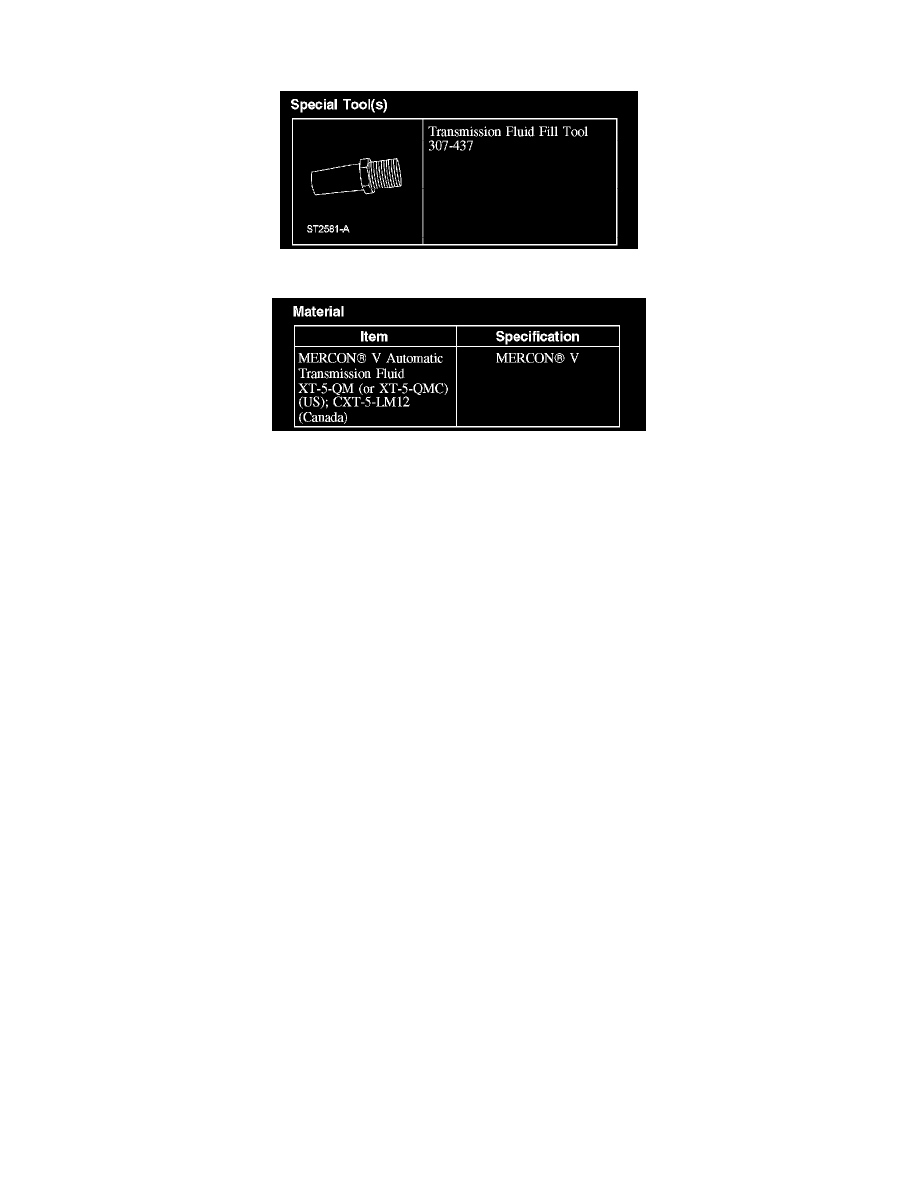Mountaineer 2WD V6-4.0L VIN K (2007)

Transmission Cooler: Component Tests and General Diagnostics
Transmission Fluid Cooler
Special Tool(s)
Material
Transmission Fluid Cooler Flow Test
CAUTION: Whenever a transmission has been disassembled to install new parts or a new or remanufactured transmission has been
installed, a new transmission fluid cooler (either in-tank, auxiliary or OTA) if equipped, will need to be installed. Using a suitable torque
converter/fluid cooler cleaner, clean and backflush the transmission fluid cooler tubes.
CAUTION: Use only clean automatic transmission fluid specified for this transmission. Do not use supplemental fluid additives, treatments
or cleaning agents. The use of these materials may affect transmission operation and result in internal damage to the transmission.
CAUTION: When internal wear or damage has occurred in the transmission, metal particles, clutch plate material or band material may
have been carried into the transmission fluid cooler.
These contaminants are a major cause of recurring transmission concerns and must be removed from the system before the transmission is put back
into use.
When evidence of transmission fluid contamination (such as metal particles, clutch plate material or band material) is found in the cooling system, the
transmission fluid cooler flow test should be carried out.
If the transmission cooling system fails the transmission fluid cooler flow test, install a new transmission fluid cooler and flush out the fluid cooler
lines. If installing a new transmission fluid cooler, use only factory approved components.
CAUTION: The transmission fluid must be at normal operating temperature 85°C - 93°C (185°F - 200°F) to make sure that the cooler
bypass is open. The cooler bypass is located in the main control valve body. The transmission fluid at normal operating temperature will be
hot.
NOTE: The engine idle, transmission linkage/cable adjustment, fluid level and line pressure must be within specification before carrying out this
test. For information on engine idle diagnosis, refer to Computers and Control Systems. For information on fluid level check, refer to Transmission
Fluid Level Check. See: Fluid - A/T/Service and Repair/Transmission Fluid Level Check
1. Place the transmission range selector lever into PARK.
2. Raise the vehicle on a hoist and place suitable safety stands under the vehicle. Refer to Maintenance/Service and Repair.
3. Hold the large drain plug with a wrench, and remove the small (center) fluid level indicating plug using a 3/16-inch Allen key.
